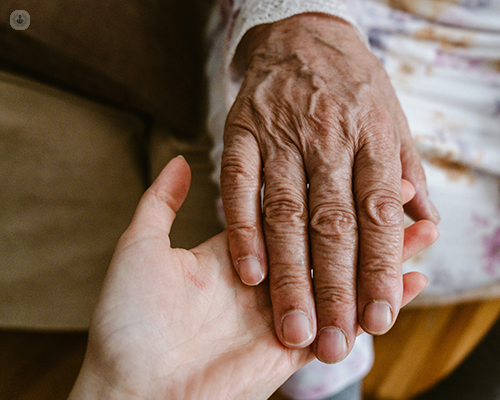Hand arthritis: From symptoms to treatment options
Autore:Hand arthritis is a prevalent condition that can cause pain, stiffness, and decreased mobility in the hands and fingers.
Mr Andrew Logan, renowned consultant orthopaedic hand surgeon, delves into the various aspects of hand arthritis, exploring its symptoms, types, and various treatment options.

What are the common symptoms of hand arthritis?
The commonest symptoms are pain, stiffness and swelling. Sometimes, an arthritic joint can be stiff and cause minimal or no pain. Others, an arthritic joint can be painful but not stiff. Typically, a patient will experience both pain and stiffness that can be associated with joint swelling.
What are the different types of hand arthritis?
There are two main types of hand arthritis: inflammatory and non-inflammatory.
Inflammatory arthritis, such as rheumatoid arthritis, is associated with more joint swelling, increased ligament laxity around the joints, and inflammatory destruction of the cartilage and surrounding bone. It can often affect multiple joints.
Non-inflammatory arthritis, such as osteoarthritis, is secondary to the wearing down and thinning of the cartilage on either side of the joint surface secondary to age.
How does hand arthritis affect daily life and activities?
Pain with gripping and lifting causes the greatest effect. As a result of this, the hand can also feel weak.
How is hand arthritis diagnosed and what are the treatment options?
Hand arthritis can be very obvious on clinical examination, but it can easily be definitively diagnosed with an X-ray.
The commonest treatment for hand arthritis is activity modification and pain relieving medications. Certain types of arthritis can also benefit from splinting during activities that cause pain.
The second line of treatment is a steroid injection into the painful joint. However, such injections are temporary and will always wear off. The duration of pain relief following an injection decreases as you have more injections into the same joint.
The final treatment for joint arthritis is an operation. Some joints are suitable for a denervation, where sensory nerves that take pain away from the joint are divided. This procedure is temporary and may allow a few years of improvement in pain.
More definitive operations either involve joint fusions or joint replacements. There are advantages and disadvantages of fusions and joint replacements, making some joints more suitable for one or the other.
What lifestyle changes can help manage hand arthritis symptoms?
The simplest way of managing hand arthritis symptoms is with functional aids such as an electric tin opener and devices that help remove bottle and jar tops. Additionally, it’s also possible to some degree to change the way the hand is used to reduce the arthritic symptoms.
If you would like to book an appointment with Mr Andrew Logan, head on over to his Top Doctors profile today.


